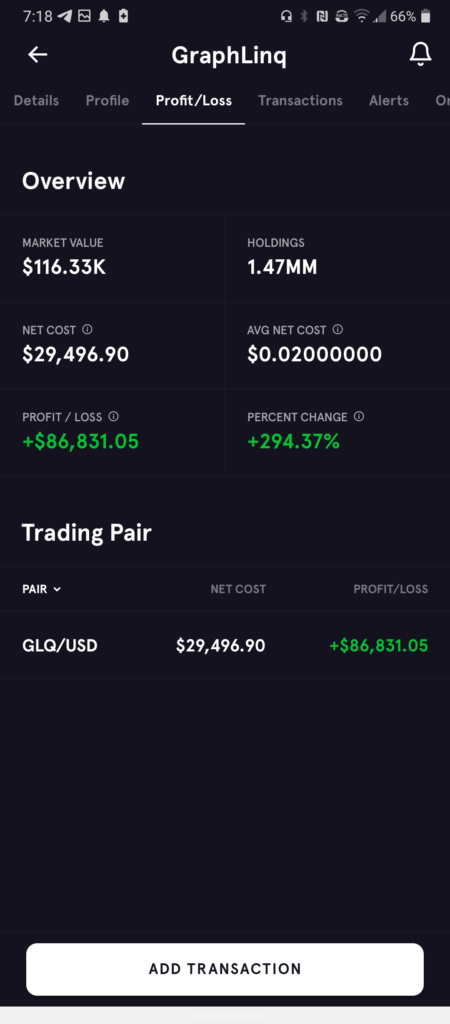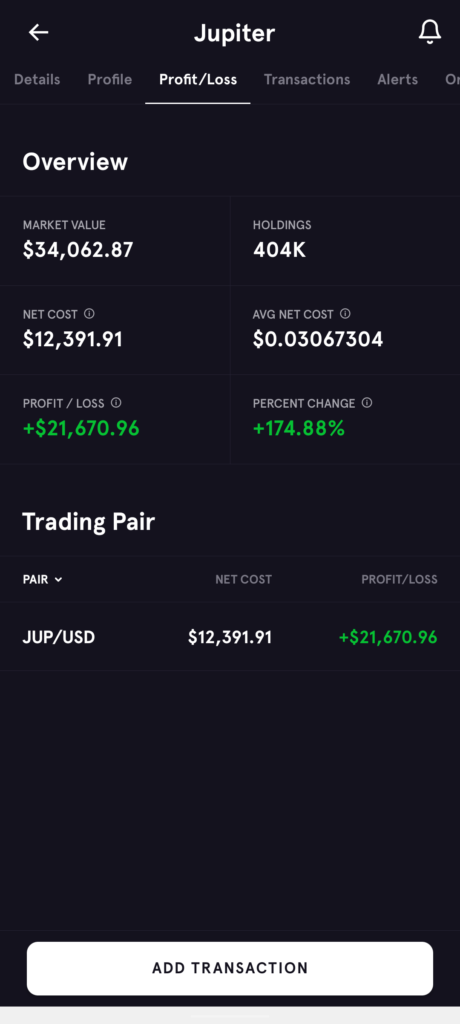FOLLOW MY JOURNEY
TO TURN $1000 INTO $1M
Don’t miss out on a life changing trade.
Subscribe to the free newsletter.
INVESTMENT STRATEGY
Start with at least $1,000
I recommend starting with at least $1,000-$10,000. You want to buy at least 1 ETH or 5 SOL. Many projects often have a minimum requirement to buy into the prelaunch.
Invest when markets are down/quiet
The best time to look for projects is before the hype, when things are quiet. Often there are many hidden gems or projects being developed quietly behind the scenes.
Looking at fundamentals/culture/branding as indicators
You don’t find the next 100x from looking at charts of current coins that have already had their spotlight. When finding new coins, we need to look at how that coin fits into the culture, how it’s being branded and if fundamental indicators like tokenomics, holder percentage and basic security all checks out. $PEPE is a good example of a memecoin that perfectly found mass adoption because it rode on arguably one of the most popular memes that everyone recognized.
Holding out for extraordinary/unexpected circumstances
When Elon Musk started tweeting cryptically about owning a Shiba breed dog, the $SHIBA coin price skyrocketed. But no one would have expected Elon Musk to go onto SNL live television and repeat that same sentiment to millions of people. That dark swan event caused $SHIBA to peak, and those who invested several hundred were able to make out with several million if they had held. One of our key strategies is to hold out for such out-of-the world events and to do our best to predict them beforehand.
Going deep into the digital trenches for alpha research
Some of the best alpha/100x projects I found came from forums and groups scattered across the internet. From social media, to 4chan/biz, finding and distilling the right information requires you to dive deep and have the wisdom to parse through bs and what could actually be factual. By the time the coin you’re looking into has hit mainstream news, it’s usually too late.
FAST FLIPS
Current Holdings:
XRP, SOL, ETH
- One free ticket per special exhibition
- Two single-use guest passes per year
LONG HOLDS
Current Holdings:
XRP, SOL, ETH
- Four free tickets per special exhibition
- Four single-use guest passes per year
MOONBAGS
Current Holdings:
PEPE, DOGE
- Five free tickets per special exhibition
- Six single-use guest passes per year
TOOLS I USE
Crypto Exchange
You will need to setup a crypto exchange that connects to your bank account. Most crypto exchanges have long background checks to verify users, so be sure to get all this done beforehand.
Wallets
There are many different kinds of wallets such as hardware and decentralized wallets. Most people who are starting out can use a decentralized wallet via browser extension such as MetaMask or Solflare.
DEX Tools
Decentralized exchanges have their own tools for tracking coins that are not available yet on the centralized exchanges. DEXTools is one of the most popular tools for tracking new and existing crypto projects across multiple blockchains.
Portfolio Tracker
Portfolio tracker apps like Blockfolio are useful for users who are often too busy in their daily lives to look up graphs and charts. With a few taps, users can add track price movement and get custom alerts on any coin. Most trackers have a graph which show profit/loss over time, very fun to see when a coin does a 10x.
Yield Protocols
The most common way users manage their wealth once they achieve a high enough networth is to move their coins into Yield Protocls to generate interest. Decentralized yield protocols like AAVE offer stable returns of up to 5-7% of USD stable coins, which beats any traditional banking institution. The returns on non-stable coins are often greater, sometimes ranging from 15-20%+.
Join a Community
You may be investing and trading on your own, but you are never alone when it comes to finding success in crypo trading. there are thousands of groups dedicated to finding and researching crypto projects around the clock. Most of these groups can be found on X or Telegram so it’s recommended to have both apps installed and to follow groups like ours so you always have the most current information.
HOUR BY HOUR TRADING
How To Spot a Winner
Rules I use to spot a winner before it becomes mainstream.
#1. Always make sure you can trace the address back to an official website or social media page.
#2. Make sure the liquidity of the coin exceeds over 7 figures.
#3. Verify that transactions are working properly by doing a small trade.
#4. Check holders to there is a fair spread of holders, and no whales or pre-sale investors can dump.
#5. Check social medias and see if the coin has been gaining traction and followers over the months.
#6. Look into the tokenomics and potential popularity of the coin given 1-2 year time horizon.


YIELD FARMING
Yield farming is considered the end game of managing wealth with cryptocurrency. Instead of relying on banks which returns measly 1-2% interest at best, many DeFi protocols offer interests on average 5-7% on stable USD coins. There are DeFi protocols which offer their own coin which you can use for staking to earn even more rewards.
When $YFI launched, users were seeing astronomical returns when staking their coin and earning up $1000’s every minute that their token was vested. The only drawback is that rewards decrease with the amount of people staking and that the price of the coin is subject to impertinence loss.
Impertinence loss is when the price of token being staked is decreasing faster than the rewards being generated so even though users may be earnings $100 an hour through farming, the price of the coin dropping is offsetting any profits that might be gained from rewards.

NEXO
Nexo is one of the most reliable and popular yield farming protocols with it’s own token to allow for extra rewards. The only drawback is that it’s unavailable in the US.

AAVE Protocol
AAVE is one the most popular decentralized yield farming protocols and has been in service for years. Users can safely earn interest on multiple coins that manages up to billions in assets.

ETH Node
Running an ETH node requires at least 32 ETH. Users will earn rewards simplfy for having the ETH node up which contributes to the integrity of the Ethereum network. The only drawback is the price entry to purchasing 32 ETH.